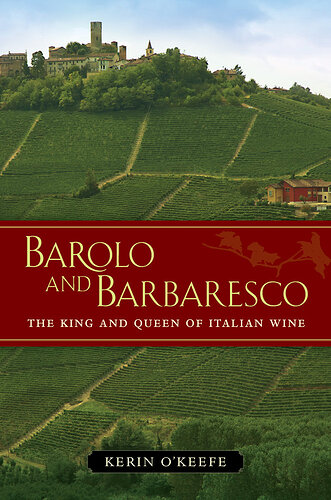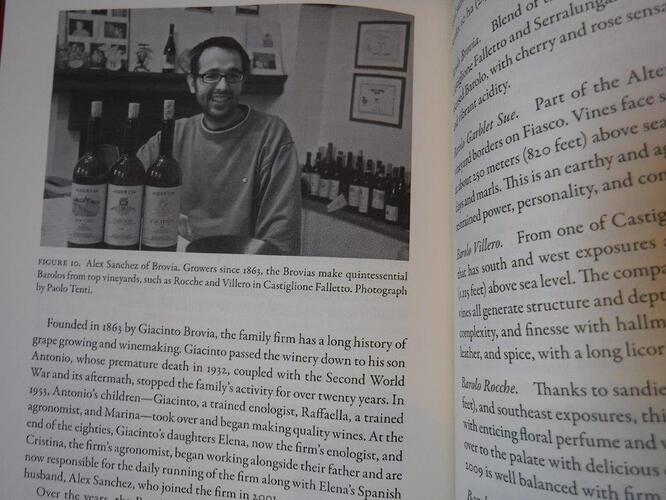Book Review:
Barolo and Barbaresco - The King and Queen of Italian Wine
Written by Kerin O’Keefe
2014 publication, 346 pages there is a discrepancy between the ISBN info on pages, and my copy
I had actually read the better pictured coffee table version of book near release, and when purchasing this copy (used) had thought I was getting that one. The version I ended up with is the smaller, non color photo, bookshelf (6x9) version. In any case, the smaller size made it easier to curl up in a leather chair and consume this over a few weeks. The book does have maps and photos, in black and white, with 10 maps and 31 photos (mostly of people). The author is deeply versed in Italian wines, having been the Italian Editor for Wine Enthusiast, and published in Decanter and World of Fine Wine, with two other books on Italian wines/estates under her belt.
The book follows an orthodox structure for wine reference books, with the first section (40 pages) covering the history and background of the region, terrain and climate, and considerations for the key varietal - nebbiolo. The detail and depth of O’Keefe’s knowledge is impressive, and although she has some views, the reporting of facts rather than opinions tends to be her style. One example of that is the extensive bibliography and notes presented at the end of the book; even with all her knowledge the book was still well researched and attributed for the deeply interested. Even oenophiles with confirmed tastes would enjoy/learn from the first section of the book. There are 8-9 pages on the stylistic differences that caused tension decades ago, and although the author falls into the traditional camp, the discussion is handled in a balanced way. The section closes out with some coverage of the expansion of DOCG, and the confusing politics around the subzone’s names.
The second section of the book is the standard breakdown by village of the Barolo area, with nuances for each area, and select profiles of key producers. The book is a few years old (published 7 years ago, and likely written 10 years ago from the feel of it) and many estates that might be of interest to WB’s are not covered. So although this is a good reference book, for villages and regional history, it is not all encompassing for the obscura. The zones covered are Barolo/Novello, Castiglione Falletto, Serralunga d’Alba, La Morra/Cherasco, Monforte d’Alba, and then a number of other areas are all lumped into one chapter.
Barbaresco gets the third section with the village proper leading, then Nieve, Treiso and lastly outlying wineries. When the producers are highlighted in the various sections, some have a few tasting notes included for current releases (at the time) as well as famed older examples. The book isn’t meant to be a TN anthology, but the inclusion of those suggests what the difference between a normale bottle vs. a vineyard designate barrique aged example might be. They’re not filler, in other words. There are a few wineries mentioned at the end of each village section as ‘producers to note’ who merit a single line; many of them are prominent but I suspect the size of the book, and the author’s preferences meant that choices, and thus exclusions, had to be made.
The book closes with a vintage guide, which she acknowledges has elements of ‘conventional wisdom’ in it, rather than a personal experience of every wine, in every year. There are also notes, a glossary, and a bibliography. This was published by an academic press, and has that look and feel. The maps are average in quality, and spartan in features compared to wine atlases, although key vineyards are noted. The b&w photos are good and generally fit with the prose, but tend to be more about putting faces to estate names. The paper stock is thick and on partially recycled paper. The book is medium sized and takes 8 hours of reading time, but the chapters are well suited for 20 min at a chunk.
I recommend the book and would give it a solid A grade.
Thanks for making it to end!
https://www.amazon.com/Barolo-Barbaresco-King-Queen-Italian/dp/0520273265 used copies are running $20 on Amazon, but I found one for $4 (shipped) on ebay a while ago as a fluke. That is NOT an affiliate link or anything like that, btw.

